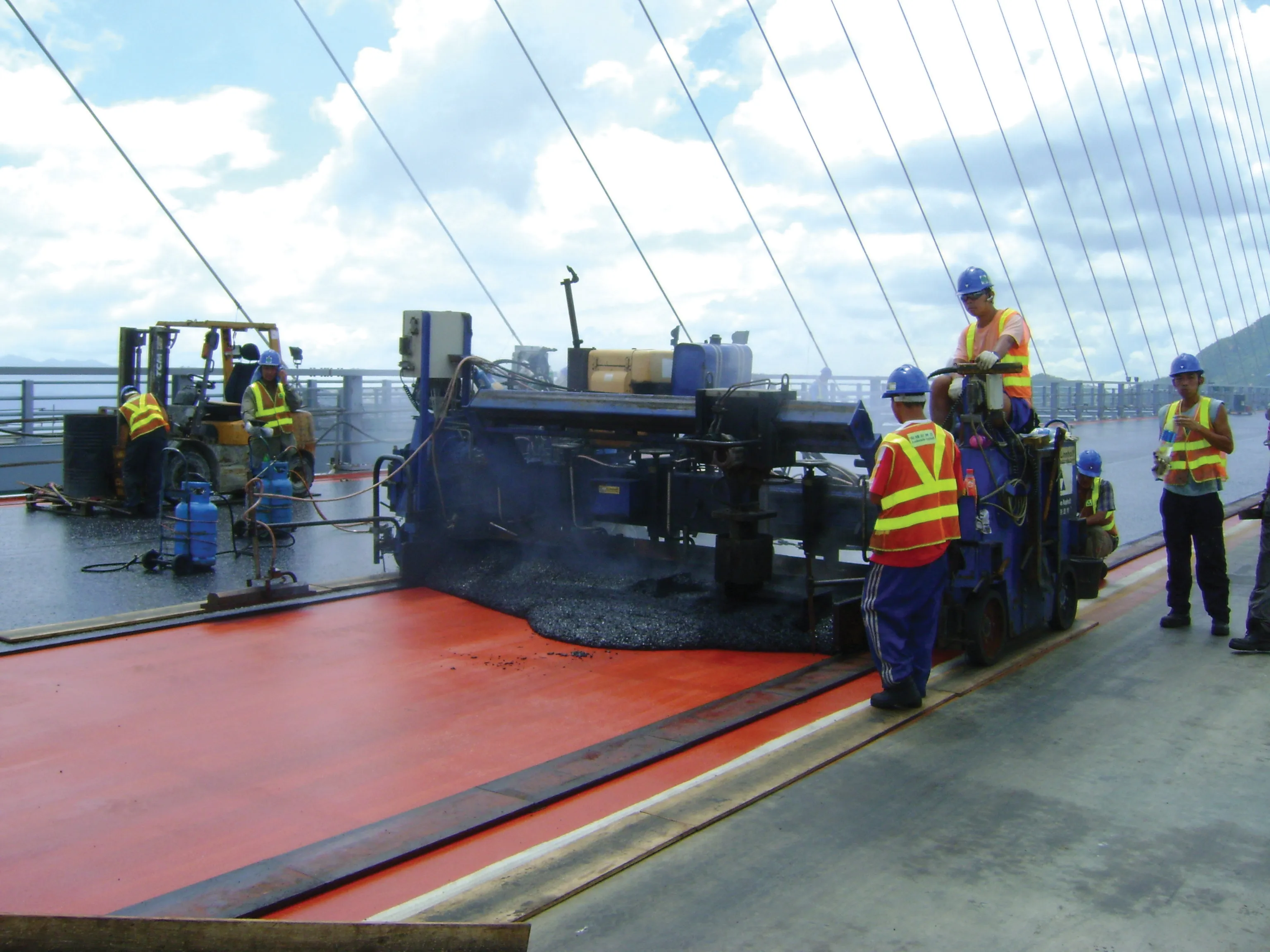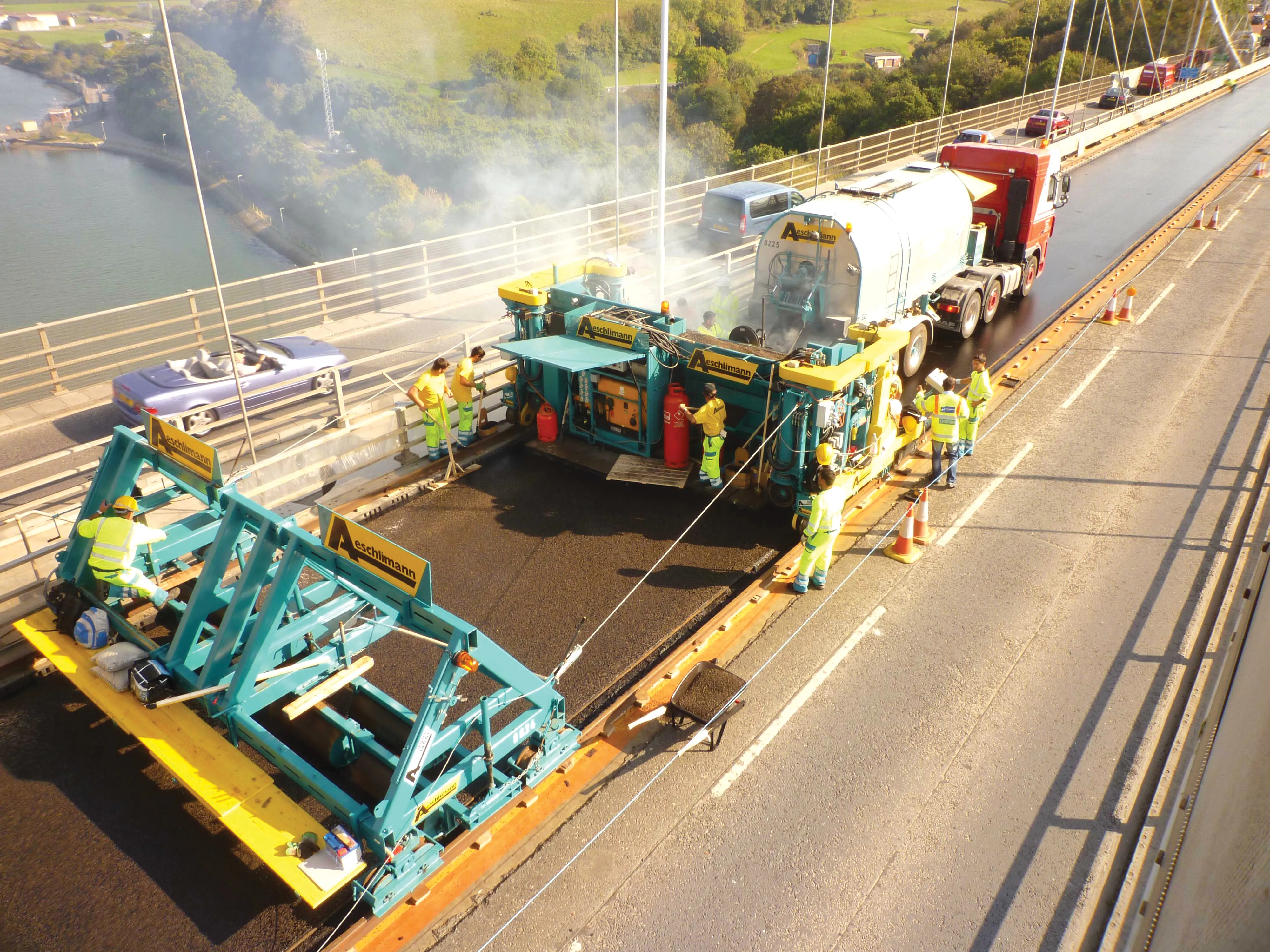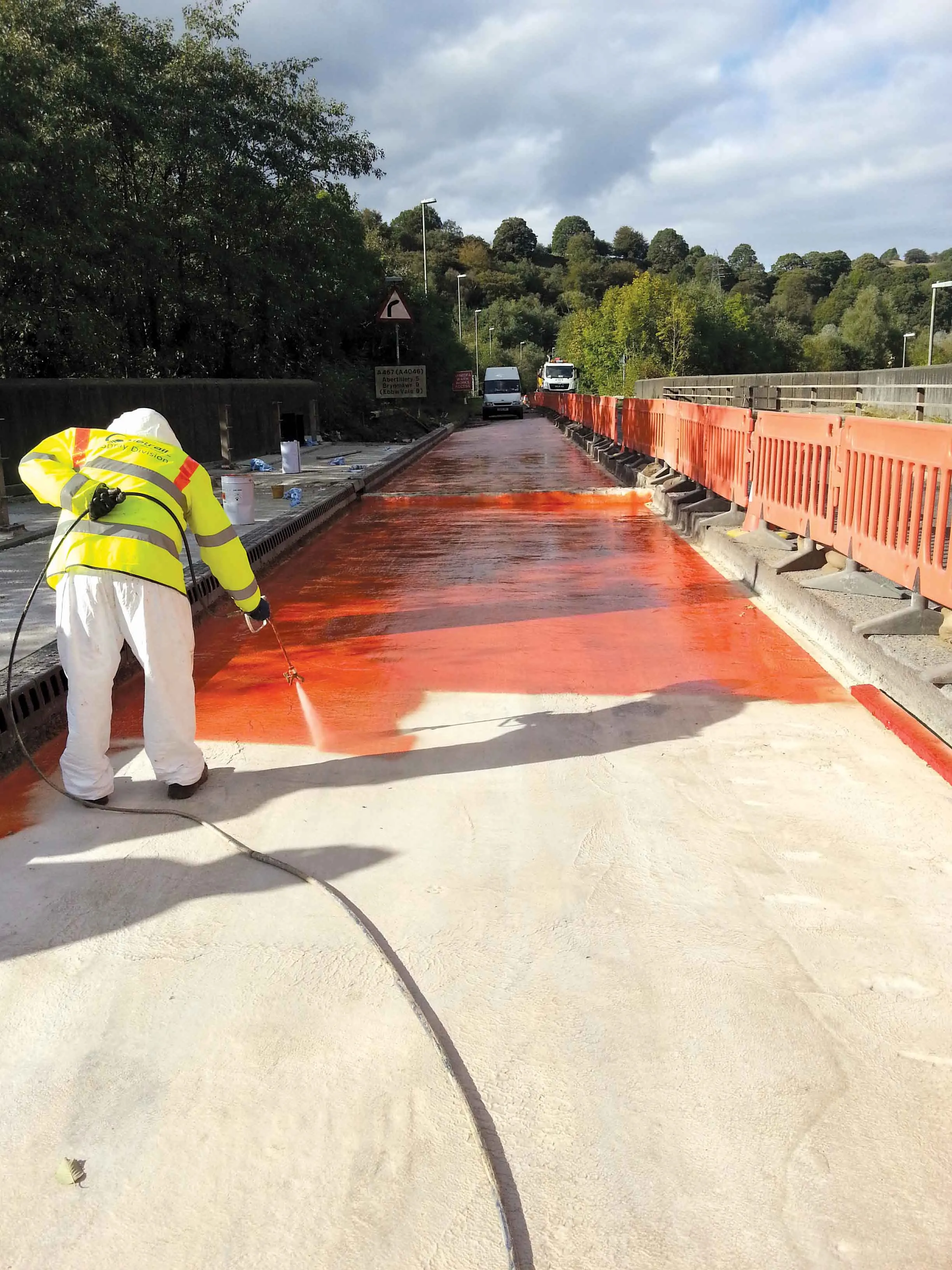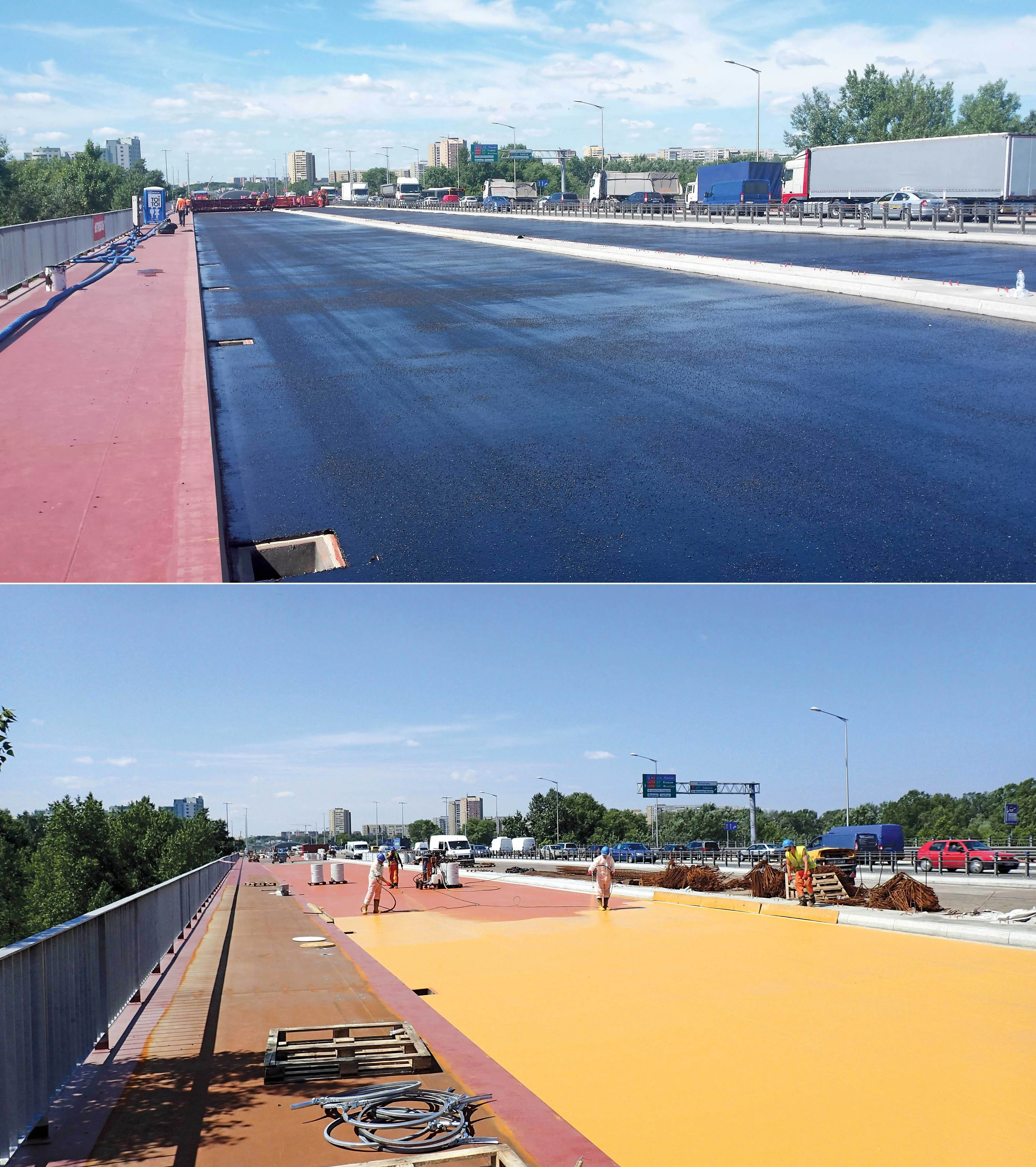Two technologies combined to give a heavily used bridge a new surface that should last for years The Avonmouth Bridge carries the M5 motorway over the River Avon, and is a vital part of the road infrastructure in south-west England, linking the counties of Somerset, Devon and Cornwall to the rest of the country. Completed in 1973, it carries commuters to the city of Bristol, and to South Wales, along with holidaymakers. The 1.4km long steel box girder bridge comprising a 16,000m2 steel decked central span a
July 9, 2012
Read time: 4 mins

Two technologies combined to give a heavily used bridge a new surface that should last for years
The Avonmouth Bridge carries the M5 motorway over the River Avon, and is a vital part of the road infrastructure in south-west England, linking the counties of Somerset, Devon and Cornwall to the rest of the country. Completed in 1973, it carries commuters to the city of Bristol, and to South Wales, along with holidaymakers.The 1.4km long steel box girder bridge comprising a 16,000m2 steel decked central span and two 16,000m2 concrete approach spans is subject to significant vibration, which is increased by the 120,000 vehicles/day using the bridge. This wears the thin surfacing, and while it was resurfaced in 2000, in September 2006 it was decided the bridge should be resurfaced again.
InterRoute, the
This was the culmination of five years of collaborative development work between Cliff Weston, technical sales director of Stirling Lloyd, manufacturers of the Eliminator bridge deck waterproofing system; their preferred surfacing partner, Aeschlimann International, which supplies the advanced Gussasphalt surfacing system, and InterRoute.
Extensive planning and specific measures were taken to ensure that any impact on traffic was minimised, including keeping three lanes of traffic in both directions open at all times. It was also decided that with peak usage being in the summer months, the works would be carried out during winter (the southbound carriageway between September-December 2008, and the northbound carriageway over the same period in 2009).
In September 2008 Stirling Lloyd Construction's specialist surface preparation subcontractor began removing the existing surfacing and waterproofing from the southbound carriageway. This proved difficult as the previously applied Eliminator waterproofing had not deteriorated since it was applied and had maintained its strong bond to the substrate.
When removed and the next stage was to re-apply new Eliminator waterproofing. The durable, tough, liquid spray applied waterproofing membrane based on advanced MMA technology forms a seamless membrane, with no joints which could be susceptible to water penetration.
The appropriate primer, ZED S94 anti-corrosive primer on the steel sections and PAR 1 reactive primer on the concrete deck, was applied to enhance the bond of the subsequent membrane and when this had cured, in under an hour, the membrane was applied in two colour-contrasting coats to provide a minimum dry film thickness (dft) of 2mm. Wet film gauge thickness tests taken throughout application to confirm this thickness was being achieved.
Once the first coat had cured and tested, a second 1mm dft layer of Eliminator was applied and overscattered with an aggregate before curing in order to provide additional resistance to shear in the surfacing. Finally a heat sensitive tack coat to enhance the bond between the membrane and the subsequent Gussasphalt surfacing was applied, a job sub-contracted to Aeschlimann International, specialists in the application of Gussasphalt surfacing.
Gussasphalt, a dense mastic asphalt that is itself almost impervious and is self-compacting when laid, is spread rather than laid using a special paving machine that runs on pre-positioned rails to achieve the required thicknesses of asphalt. This highly accurate process, having a tolerance of +/-2mm, provides an excellent ride quality and ensures that the deadweight is controlled since the depth of the asphalt pavement is accurately kept to the level prescribed by the bridge engineer. Applied to the entire 17m wide carriageway in two runs in order to minimise the number of joints, the total thickness of surfacing was only 50mm on the steel sections and 60mm on the concrete.
Having collaborated on a number of large projects, Stirling Lloyd knew the Eliminator system would forge an excellent bond to the Gussasphalt and that the final surface would produce an excellent ride quality.
Planning for refurbishment of the northbound carriageway using the same products and methodology is underway, and it is claimed that the new surface will reduce maintenance costs dramatically in the coming years.









